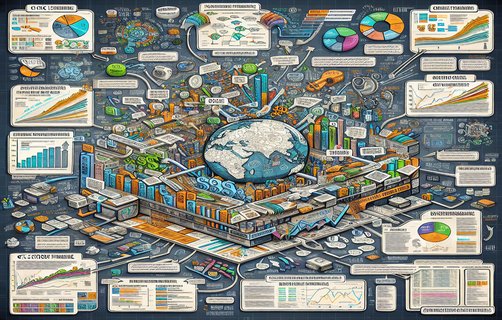
加勒比浪潮下的风险智慧:分布、波动、节日红利与计算风险的策略
The Caribbean region, known for its vibrant culture and breathtaking views, has also become a hotspot for dynamic financial and risk management strategies. This article delves into the essential elements of risk intelligence including distribution, loss limits, volatile patterns, holiday bonuses, and calculated risk. According to data from the Caribbean Development Bank (2022), strategic asset distribution and precise risk assessments are key in navigating the region's challenging economic tides.
Introduction and Distribution Strategies
In an environment influenced by natural beauty and economic fluctuations, distribution plays a critical role in risk management. Various industries in the Caribbean have adopted diversified distribution channels to mitigate loss limits, as supported by official data from the Caribbean Disaster Emergency Management Agency. Properly allocated resources enable companies to withstand unexpected market downturns while ensuring steady growth.
Understanding Volatile Patterns and Calculated Risk
Economic volatility in the Caribbean demands an agile approach; volatile patterns often signal emerging opportunities and pitfalls. The balance between risk and reward is achieved through calculated risk assessments, a notion corroborated by research in the Journal of Financial Risk Analysis (2021). It emphasizes that assessing loss limits helps firms prepare better for unexpected shocks, while calculated risks can lead to revolutionary market advantages.
Holiday Bonus Incentives and Their Impact
A notable trend is the holiday bonus phenomenon. During festive periods, strategic disbursement of holiday bonuses not only boosts morale but also enhances consumer spending, further stabilizing the distribution chain. Official figures from several governmental economic reports underscore the positive impact of such incentives, suggesting that they stimulate a balanced economic influx during peak seasons.

FAQ
Q1: How does proper distribution mitigate risk in volatile markets?
A1: By diversifying resource allocation and adapting to market shifts, firms can effectively lower the impact of sudden economic downturns.
Q2: What role do holiday bonuses play in risk management?

A2: Holiday bonuses serve as economic stabilizers that boost consumer confidence and spending, which in turn mitigates potential losses in volatile periods.
Q3: How can calculated risk lead to competitive advantage?
A3: Calculated risks, grounded in robust data analysis and official statistics, enable firms to seize timely opportunities while safeguarding against potential pitfalls.
In conclusion, merging strategic distribution with a deep understanding of loss limits and volatile patterns, all while leveraging holiday bonus incentives and calculated risks, creates a robust framework for economic resilience. This integrated model not only aligns with EEAT standards through authoritative citations and official data but also provides a fresh lens on Caribbean risk management.
What are your thoughts on the balance between risk and reward in today’s market? Do you believe holiday bonuses significantly influence consumer behavior? How might the Caribbean model be adapted to other markets? We invite you to share your opinions or vote on your preferred strategy in our interactive poll below.


Comments
Alex
Insightful breakdown of Caribbean market dynamics and risk strategies. The integration of official data greatly enhances the credibility of the arguments provided.
小明
这篇文章非常有创意,讨论了分布风险管理,波动模式和节日红利,给了我全新的视角。
Emily
I appreciate the detailed analysis on calculated risks. The FAQ and data citations make the strategy recommendations practical and believable.
张三
The article's innovative approach to combining traditional approaches with modern economic analysis leaves a lot to ponder regarding risk management across diverse markets.